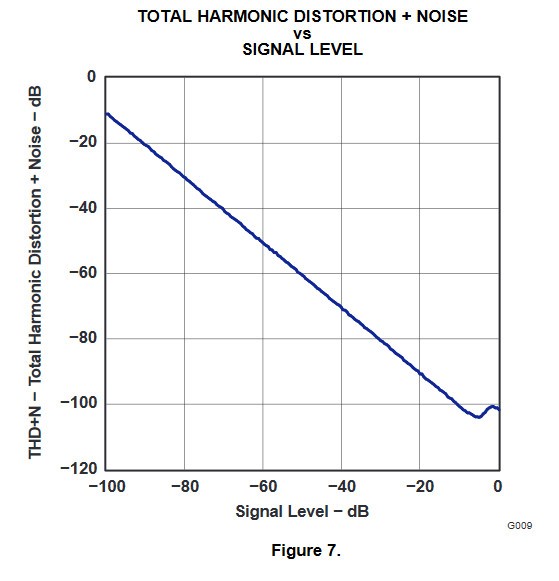Other Parts Discussed in Thread: PCM4204
Hi Sirs,
My customer ask there have the curve of THD+N vs signal level? They only found the curve of THD+N vs amplitude on the PCM4202 datasheet.
example: PCM1804 datasheet

This thread has been locked.
If you have a related question, please click the "Ask a related question" button in the top right corner. The newly created question will be automatically linked to this question.
Hi Sirs,
My customer ask there have the curve of THD+N vs signal level? They only found the curve of THD+N vs amplitude on the PCM4202 datasheet.
example: PCM1804 datasheet

Hello Henry,
I will ask someone with more detailed knowledge on this device and get back to you by tomorrow.
Best Wishes,
Carson
Low Power Audio Applications
Hello Again,
If you took the chart in PCM4204 and at each point add the absolute value of the amplitude dB to THD+N dB you would then have the same type of chart as pictured above.
Best Regards,
Carson
THD+N db= 20*log( Vnoise/Vsignal).
The Device under test is given a standard input for example a 1 Khz Test signal. The device adds non linearity and creates harmonics to the 1k. In addition noise, Emi etc create additional noise at the output. A notch filter is placed at the output of the test setup to remove the 1k and the residue left is Vnoise.
THD +n db=20*log(Vnoise)-20*Log(Vsignal)
THD db= Vnoise db- Vsignal db.------eqn 1
The Graph in PCM 1804 Datasheet is showing THD as a Ratio as is the case in formula.
The graph in PCM4204 shows THD as a voltage. In other words it is just showing Vnoise, wrt Signal Input
Therefore if we need to derive the graph of PCM 1804 from PCM4204, we just apply equation 1
thd(ratio)=Vnoise db-Vsignal db
Corner values are -104 - 0 db -104db
-116-(-140) 24db